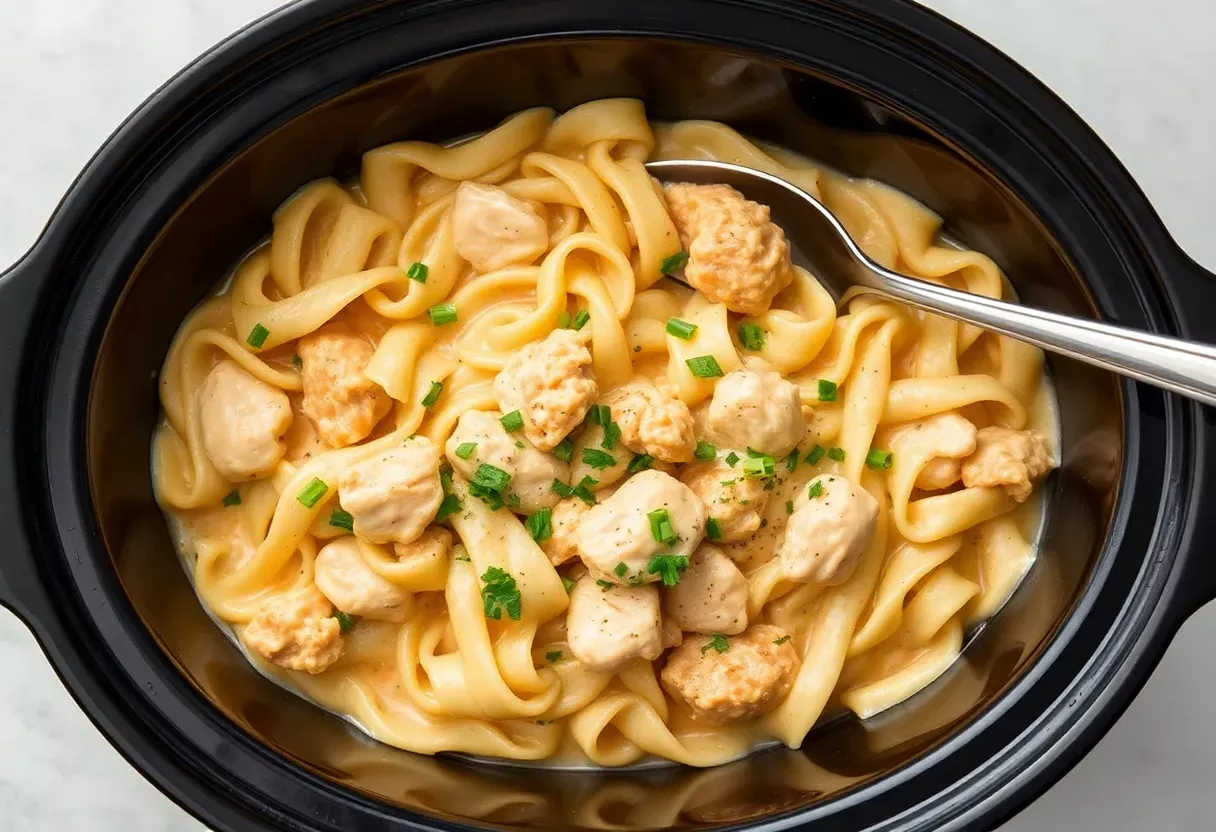You want a meal that’s stupidly easy, wildly flavorful, and makes your kitchen smell like an Irish pub. Enter: corned beef and cabbage in the crock pot. No babysitting, no fancy skills—just dump, set, and forget.
This isn’t just food; it’s a cheat code for looking like you’ve got your life together. And the best part? Leftovers taste even better.
Who said effort equals reward? Clearly, they never owned a slow cooker.
Why This Recipe Slaps
First, it’s hands-off. The crock pot does 95% of the work while you binge-watch your favorite show.
Second, the flavors meld into something magical—tender beef, sweet cabbage, and savory spices. Third, it’s versatile. Serve it with mustard, horseradish, or straight-up with a fork (no judgment).
And let’s be real: anything that cooks itself deserves a standing ovation.
Ingredients You’ll Need
- 3–4 lbs corned beef brisket (with seasoning packet)
- 1 head cabbage, chopped into wedges
- 4–5 carrots, peeled and cut into chunks
- 4–5 potatoes, quartered (Yukon Gold or red)
- 1 onion, sliced
- 4 cups beef broth (or water if you’re lazy)
- 2 tbsp mustard (optional, but highly recommended)
- 1 tsp black pepper
Step-by-Step Instructions
- Layer the veggies. Throw onions, carrots, and potatoes into the crock pot. They’re the foundation of your flavor kingdom.
- Add the brisket. Place the corned beef fat-side up on top of the veggies. Sprinkle the seasoning packet over it like you’re seasoning your life choices.
- Pour the liquid. Add beef broth (or water) until it covers about halfway up the brisket.
Pro tip: broth = flavor, water = meh.
- Cook low and slow. Set the crock pot to low for 8–9 hours or high for 5–6. Patience is a virtue, but hunger is a motivator.
- Add the cabbage. Toss in the cabbage wedges during the last 2 hours. Unless you enjoy mush, then ignore this step.
- Slice and serve. Remove the beef, slice against the grain, and pile everything onto a plate.
Bonus points for extra mustard.
Storage Instructions
Store leftovers in an airtight container in the fridge for up to 4 days. Reheat in the microwave or on the stove—just don’t nuke it into rubber. For longer storage, freeze portions for up to 3 months.
FYI, the cabbage might get soggy, but the beef stays glorious.
Why This Recipe Is a Win
It’s budget-friendly, feeds a crowd, and requires zero culinary talent. Plus, it’s packed with protein and veggies—so you can pretend you’re healthy. The slow cooking breaks down the beef into melt-in-your-mouth perfection, and the leftovers make killer sandwiches.
IMO, it’s the ultimate comfort food with minimal effort.
Common Mistakes to Avoid
- Overcooking the cabbage. Add it late unless you want a sad, soupy mess.
- Skipping the mustard. It cuts through the richness like a flavor ninja.
- Using high heat the whole time. Low and slow = tender beef. High and fast = chew toy.
- Not slicing against the grain. Unless you enjoy chewing for days, pay attention to those meat fibers.
Alternatives for the Adventurous
Swap the potatoes for parsnips or turnips if you’re feeling fancy. Use Guinness instead of broth for a deeper flavor (yes, it’s worth it).
Vegetarian? Try a seitan or jackfruit version, but don’t blame us if it’s not the same. For spice lovers, add a dash of red pepper flakes to the broth.
FAQs
Can I use a different cut of beef?
Nope.
Corned beef brisket is the star here. Other cuts won’t have the same texture or flavor. Trust the process.
Do I need to rinse the brisket?
Some people do to reduce saltiness, but IMO, it’s unnecessary.
The broth balances it out. Live dangerously.
Can I cook this on high the whole time?
Technically yes, but the beef won’t be as tender. Slow cooking is like a spa day for meat—don’t rush it.
Why is my cabbage mushy?
You added it too early.
Cabbage cooks fast. Next time, toss it in during the last 2 hours.
Can I make this ahead of time?
Absolutely. Cook it, store it, and reheat it.
The flavors get even better, like a culinary time machine.
Final Thoughts
Corned beef and cabbage in a crock pot is the ultimate lazy genius meal. It’s flavorful, foolproof, and practically cooks itself. Whether it’s St.
Patrick’s Day or a random Tuesday, this dish delivers. So grab your slow cooker, embrace the simplicity, and prepare for compliments. And if anyone asks for your secret?
Just wink and say, “I’m a culinary wizard.”






